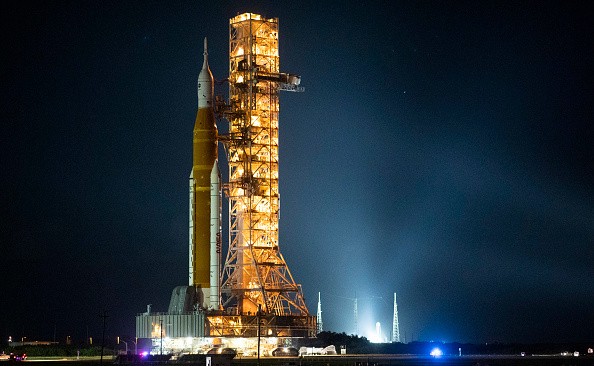The National Aeronomics and Space Administration (NASA) has been trying to unlock life in space. Space explorations are important to determine whether life on other planets existed.

According to the latest report, the NASA Orion Spacecraft is expected to travel 40,000 past the moon before it finally returns to Earth.
NASA's Orion Spacecraft has been instrumental to the moon mission and space explorations. AccuWeather's latest astronomy report update on November 26, 2022, showed that the spacecraft would take a noticeable distance from the Earth's planet on November 28, 2022.
Astronomers and space lovers await this moment as the spacecraft tracks to the moon. The report said that the Orion spacecraft would be in orbit for almost a week.
Based on the report, key facilities communicate with the spacecraft. It added that NASA's Deep Space Network helps with communications, including the Artemis 1.
On the other hand, CNN reported that the spacecraft began to take pictures of the moon craters. The report explained that the Orion spacecraft would return to planet Earth after its mission.
Meanwhile, NASA said that the Orion spacecraft would require about six days to have a complete half of revolution on the moon. In addition, NASA added that they would test the control system engines for performance evaluation.
You can visit NASA's official page to read the updated report on the Orion spacecraft.
While NASA has spacecraft landed for space explorations, the Orion finally sent images and new views of the moon that could help astronomers and scientists in their research.
There are many moon explorations conducted using spacecraft. As provided by images, the moon has noticeable solid and rocky craters and surfaces, noting the thin atmosphere there. Researchers are looking into the potential existence of life on the moon despite its poor atmosphere.
Artemis 1 Rocket Mission to Moon
Furthermore, Hurricane-level Nicole threatened to derail the launch mission of NASA's Artemis 1 due to the severe weather conditions. The cancellations of take-off could be accounted into the weather or problems with the spacecraft. The previous report explained that explorations were canceled or put off due to bad sensors, weather conditions, or fuel leaks.
According to reports, Artemis 1 has been crucial for space explorations. It especially aims to bring human exploration to the planets and the moon. The report explained that the mission to the moon is a human commitment to understanding the moon and other planets.
Meanwhile, the Orion will be important as it gathers information from the moon. Engineers will look into the performance of the Orion 1 for future space explorations.
Furthermore, the post added that NASA would conduct television coverage of space exploration. You could visit NASA's website for updates.
Mars Exploration
Other than the Moon, NASA has been sending rovers to study Mars' life existence. Researchers deployed rovers that could send rock samples, in which scientists could look into. The advanced rovers send signals and collect information about Mars.
Related Article : NASA Spots Breaks on Mars Curiosity Rover Wheels -- Will This Impede Data Gathering and Mission to Mars?
For more similar, don't forget to follow Nature World News.
© 2026 NatureWorldNews.com All rights reserved. Do not reproduce without permission.





